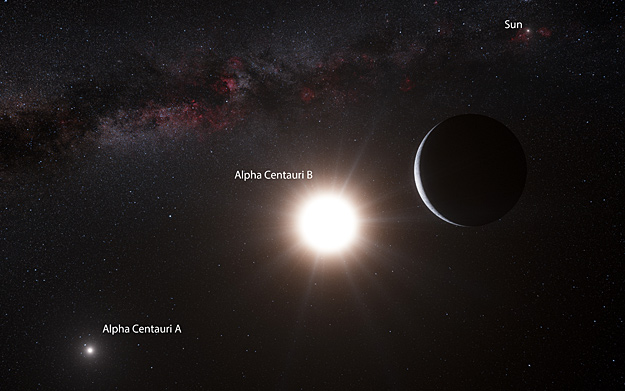The Chemical Composition of Alpha Centauri AB Revisited

The two solar-like stars α Cen A and B have long served as cornerstones for stellar physics in virtue of their immediate proximity, association in a visual binary, and masses that bracket that of the Sun.
The recent detection of a terrestrial planet in the cool, suspected tertiary Proxima Cen now makes the system also of prime interest in the context of planetary studies.
It is therefore of fundamental importance to tightly constrain the properties of the individual stellar components. We present a fully self-consistent, line-by-line differential abundance analysis of α Cen AB based on high-quality HARPS data. Various line lists are used and analysis strategies implemented to improve the reliability of the results. Abundances of 21 species with a typical precision of 0.02-0.03 dex are reported. We find that the chemical composition of the two stars is not scaled solar (e.g. Na and Ni excess, depletion of neutron-capture elements), but that their patterns are strikingly similar, with a mean abundance difference (A – B) with respect to hydrogen of – 0.01±0.04 dex. Much of the scatter may be ascribed to physical effects that are not fully removed through a differential analysis because of the mismatch in parameters between the two components.
We derive an age for the system from abundance indicators (e.g. [Y/Mg] and [Y/Al]) that is slightly larger than solar and in agreement with most asteroseismic results. Assuming coeval formation for the three components belonging to the system, this implies an age of about ∼6 Gyrs for the M dwarf hosting the terrestrial planet Proxima Cen b.
After correction for Galactic chemical evolution effects, we find a trend between the abundance ratios and condensation temperature in α Cen A akin to that of the Sun. However, taking this finding as evidence for the sequestration of rocky material locked up in planets may be premature given that a clear link between the two phenomena remains to be established. The similarity between the abundance pattern of the binary components argues against the swallowing of a massive planet by one of the stars after the convective zones have shrunk to their present-day sizes.
Thierry Morel
(Submitted on 2 May 2018)
Comments: Accepted for publication in A&A. 24 pages, 8 figures. Abstract abridged
Subjects: Solar and Stellar Astrophysics (astro-ph.SR)
Cite as: arXiv:1805.00929 [astro-ph.SR] (or arXiv:1805.00929v1 [astro-ph.SR] for this version)
Submission history
From: Thierry Morel
[v1] Wed, 2 May 2018 17:50:33 GMT (645kb,D)
https://arxiv.org/abs/1805.00929
Astrobiology







